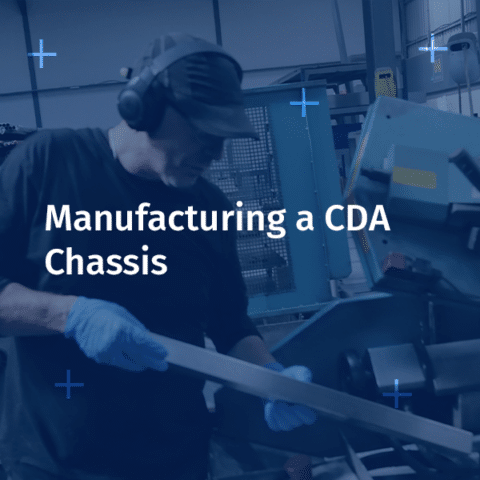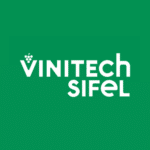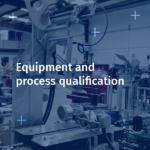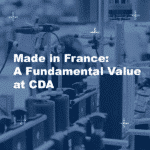At CDA, we ensure the complete in-house manufacturing of all machine chassis through our CDU division (sheet metal workshop). This control enables us to guarantee the quality, strength, and precision of each chassis, key elements for the optimal performance of our equipment.
The production of these chassis involves several crucial stages, each requiring specific technical expertise:
1. Design by the engineering department
Every chassis begins with a detailed design drafted by our Engineering Department (BE). This plan defines the exact dimensions, angles, holes, and mounting positions required for the components to be installed, while accounting for the machine’s technical and functional constraints. The BE works closely with other departments to ensure that each chassis is fully tailored to meet our clients’ requirements.
2. Cutting the chassis: laser or waterjet?
Once the design is finalised, the next step is cutting the metal sheets. At CDA, we use two high-precision methods: laser cutting and waterjet cutting.
- Laser cutting uses a fine, powerful laser beam to heat and cut through the sheet metal with exceptional precision. It’s ideal for thin to medium-thickness materials and allows for clean, fast, and distortion-free cutting. This technique is well-suited for complex shapes and tight tolerances, and can be used on materials such as stainless steel, aluminium, or mild steel.
- Waterjet cutting, on the other hand, uses a high-pressure stream of water—often mixed with an abrasive—to cut thicker or heat-sensitive materials. As no heat is generated, it prevents thermal distortion and preserves the material’s structural integrity. This method is effective for cutting a wide range of materials including metals, plastics, and composites.
Each cutting technique has its own advantages and is selected based on the material type, thickness, and specific requirements of the chassis.
3. Bending the metal sheets
After cutting, the next phase is bending the sheet metal into its final shape. This process is essential to ensure the structural integrity and functionality of the chassis. Using high-precision bending presses, the sheets are shaped to the exact angles required without causing any deformation.
This step demands considerable expertise: even a minor bending error can lead to assembly issues later on. Whether simple or complex, each bend must be accurate to allow a perfect fit between all chassis components.
4. Welding
The final step in chassis manufacturing is welding. Once the pieces have been bent, they are assembled and welded to create the final chassis structure. This phase is critical to ensure the strength and long-term durability of the equipment.
The quality and precision of each weld are essential to ensure the chassis can withstand operational stresses and that all components mounted on it remain securely in place and perfectly aligned.
🎥 Watch the video showcasing this process: Chassis Manufacturing for our VST Cap Feeding and Pressing Machine
Conclusion: In-house manufacturing for guaranteed quality
Chassis manufacturing at CDA’s CDU department is a carefully controlled process involving in-house design, cutting, bending, and welding. Our ability to manage the entire process internally gives us complete control over quality and reliability, enabling us to meet the highest industry standards.
Each chassis is built for maximum robustness and seamless integration with our machines, ensuring long-term performance and customer satisfaction.










